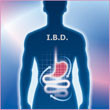Sarpatwari and co-authors discuss physician-centered strategies used to promote generics prescribing in the US and how such strategies might apply to biosimilars [1].
Traditional approaches
Traditional approaches to promote the prescribing of generics in the US include information-supplying programmes and academic detailing.
Formulary decision support provides physicians with disease management guidelines and patients’ insurance formularies at the point of prescribing facilitate a choice of medication that is safe, effective and affordable. In a study involving 1.5 million patients and 35,000 physicians, a 3.3% increase in generics prescribing by physicians was observed when colour coding (green, blue and red) was used to highlight preferred formulary, i.e. generic, non-preferred formulary and non-formulary medications. This translated into estimated savings of US$845,000 in prescription drug costs per 100,000 people.
Academic detailers seek to present physicians with neutral, evidence-based educational materials on cost-effective practices developed by university-based experts. This is in contrast to brand-name drug sales representatives. In a Cochrane meta-analysis of 28 studies, a 5.6% median risk difference in compliance with desired practices between physician recipients of academic detailing and controls was found, leading to the conclusion that such programmes ‘have effects on prescribing that are relatively consistent and small, but potentially important’.
Financial incentives
More recently, direct financial incentives have been used to promote generics prescribing.
In 2007, a Blue Care Network 90-day programme that offered physicians US$100 for every patient switched from a brand-name to a generic cholesterol-lowering medication, reportedly cost US$2 million but saved the company US$5 million in drug costs and patients US$1 million in co-payments in just five months. While a Excellus BlueCross BlueShield pilot, which provided a higher office visit payment rate for physician groups that increased their generics fill rates by 5% or more, estimated that this reduced patients’ out-of-pocket costs by 10–12%.
The authors conclude that financial incentives are generally not appropriate for therapeutic generics or non-interchangeable biosimilars substitution due to the distortive impact this could have on clinical decision-making.
To encourage treatment initiation on generics or biosimilars, therapeutic or non-interchangeable biosimilars substitution, or bioequivalent narrow therapeutic index (NTI) or interchangeable biosimilars substitution, policymakers can instead rely on traditional strategies, which remain underused.
Conflict of interest
AS Kesselheim’s (ASK) work is supported by an Ignition Award from the Harvard Program in Therapeutic Science. The funders had no role in study design, data collection and analysis, decision to publish, or preparation of the manuscript. The authors of the research paper [1] declared that they have read the journal's policy and declare the conflicts that ASK is a member of the Editorial Board of PLOS Medicine.
Related articles
Paying physicians to prescribe generics and biosimilars in the US
Substitution of generics in the US
Substitution of biosimilars in the US
Considerations when promoting generics prescribing in the US
Reference
1. Sarpatwari A, Choudhry NK, Avorn J, Kesselheim AS. Paying physicians to prescribe generic drugs and follow-on biologics in the United States. PLoS Med. 2015;12(3):e1001802.
Permission granted to reproduce for personal and non-commercial use only. All other reproduction, copy or reprinting of all or part of any ‘Content’ found on this website is strictly prohibited without the prior consent of the publisher. Contact the publisher to obtain permission before redistributing.
Copyright – Unless otherwise stated all contents of this website are © 2015 Pro Pharma Communications International. All Rights Reserved.








 0
0











Post your comment